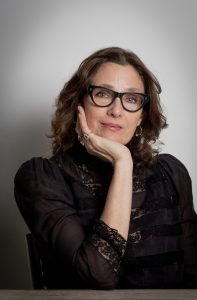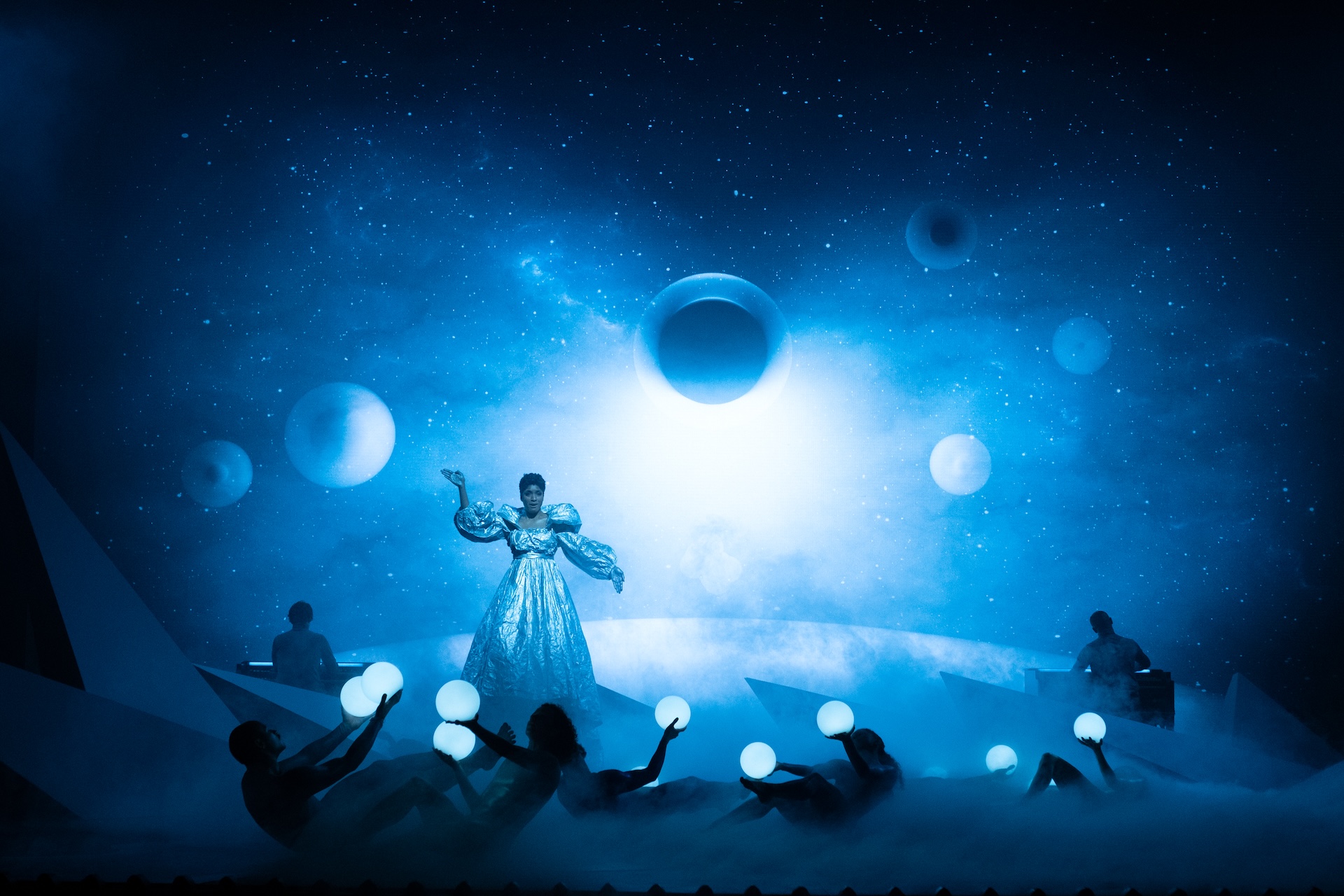Writer’s block. Is there anything more frustrating than staring at a blinking cursor not knowing what to type next?
Some years ago, Rebecca Miller wrote a short story about a novelist in exactly that predicament. A chance encounter with a mesmerizing woman triggers his creativity and, while it complicates his life in many ways, it ends up being just the experience he needed.
The story stuck with Miller and she began to look at its potential as a feature film. Going back to it, she added characters, created new narratives while expanding others. She also made her lead character Steven (Peter Dinklage) a composer, his wife Patricia (Anne Hathaway) an unsettled psychiatrist, and his muse Katrina (Marisa Tomei) a tugboat captain. Colliding unique worlds with quirky characters and truly unpredictable plotlines, She Came to Me is a story of inspiration and love that was almost a decade in the making.
Tell me about the original short story that inspired this film and why you wanted to revisit it.
The original story is part of a collection called Total which was recently published. But I wrote the story over ten years ago. It was about one main character in Dublin who is a middle-aged novelist and he is blocked. He is desperate that he doesn’t have an idea for his next novel and has no idea what he’s going to do. He ends up walking into a bar and notices this American woman. One thing leads to another, she weaves this web around him and ends up bringing him to her bed and breakfast. She’s basically the prototype of Katrina’s character. That experience gives him the idea for his next project… so it’s really about the ironies of inspiration and how you never know where it’s going to come from. It’s an experience that he sort of wishes he hadn’t had, but it gives him his next novel. It’s just a funny little story.

Rebecca Miller. Photo by Leo Veira
Time went by and the idea just kept haunting me – that central idea of inspiration and how we all inspire and create each other. And how reliant inspiration is on other people; part of what brings inspiration into people’s lives is “getting lost” – if you don’t get lost, it’s very hard to let your unconscious work and allow new ideas, images and characters in.
What has been your personal experience with writer’s block?
I had a serious situation with block over twenty years ago. And when I say that, I mean it was real, true block. Not just, “Oh, I have no ideas today.” I was living in Ireland and was newly married. I didn’t know anyone and was very isolated on top of that.
So I volunteered at a women’s shelter. I didn’t do it in order to get unblocked… I did it because I was desperate for some way to be useful in the world. I did that for several months, and after that, I started to work on the first story from a collection called Personal Velocity, which ended up being a book of stories. That led to the film version and got me back on the track of having a film career.
I would say it was really that act of taking my mind off of myself. I was working with kids aged two to twelve, and there was just something about doing that. It’s a similar feeling in the film – Steven has to stop fixating on how he’s not able to think of anything and start focusing on other people. I think it’s about getting yourself out of your head and goes back to that idea of getting lost. Artists have to be a bit pragmatic – we have to make a living and get our films made. But if you’re too pragmatic, you end up losing the very things that gave you your talent in the first place – the ability to dream, to wander, and to just let things come to you.
You spoke to a lot of different people over the course of your research, in a lot of different fields. What were some of the unique things that you learned?
I found the tugboat world really fascinating. Tug people actually remind me a little bit of film crews. They’re people who don’t quite belong anywhere else. A lot of them have pasts that are complicated and a lot live in different states. They come in for two weeks at a time to do their shift.
In our story, we had our characters live on the boat. We also cast a few actual tug people. There’s this wonderful sense of being off the grid… we live in such a corporate society where there’s nowhere to hide. There’s no privacy anymore. But there’s something about the tug community that just feels a little bit looser to me. They’ve figured out a way to live that isn’t quite the “square peg in a square hole” type of life. I love that.
I also did research into opera, which was really interesting. I wanted to know how long they rehearse and what their process is like. Even what kind of pencils they use – there’s a certain type called Blackwing. I knew about that partly because my son studies composition in college – and that was what drew me to opera in the first place and what made me change Steven’s character from a writer to a composer. But I also thought that having music in the film would be beautiful, and I wanted to get every single detail right.
You’ve described the narrative as having an “operatic reach.” How so?
The story kind of hurdles pell-mell. And there’s a causal chain, which is something I think about a lot when I write. One thing fires, and then another thing fires another thing… so there’s a kind of logic. It’s a slightly mad and screwball logic, but it is still a logic that has a basis in possibility.
I wanted it to be that the stakes for these people are really very high, and I think it’s in that sense that I mean there’s an operatic reach. In opera it’s life or death and love means everything – it’s the same for our characters. Like Steven. When you’re an artist and you’re blocked, it really does feel like being buried alive. All of these people are at the edge of their own wits. How do they all find their way and back to a place where they can actually endure life?
It’s also in terms of the look and feel of the film. If you look at the operas as the highest points of stylization in the film, the first one is very stark; it’s red and white and very expressionistic. And then you’ve got the second one, which is very misty and more in shades of blues and grays. It’s poetic.
And then you have reality. Reality doesn’t need to be all the way down where we tend to think of it. It can be a little pumped up so it still feels real in the film. I wanted very realistic acting and realistic scenes with real people, but with some pumped up color. It was a combination and a bit of a trick I was conjuring.
Tell me about your two lead female characters, Katrina and Patricia.
Katrina was just a joy. There are certain characters where it’s almost like they arrive and they exist and you’re just taking it all down somehow. There are others that you have to work really hard for. And she was one that just arrived. Part of it was because I had written the short story, so I already had her voice in my head, her rhythms. The way that she spoke and her humor. She was so funny. I love the idea that she thinks there’s something wrong with her, and she has, in fact, been told there’s something wrong with her.
We live in such a pathologizing society. We all have something, but so often it’s just called being human. For me it was a question of a drip feed of information… she’s this tough working woman when you first met her. Then you wonder if she’s mad… then you think she’s something else entirely. I wanted to keep you guessing, not just in terms of plot, but in terms of character. Really in my movies, the most important thing is character. So with her, the most important thing was to gather the anomalies into one person, to get the different aspects of her character.
Patricia’s character was one I rewrote a bit once I cast Anne Hathaway. Originally, she was a little bit older, I thought of her as more in her forties. Being in her thirties, it meant she was very young when she had her child. That was good because it helped her character – the character of a woman who manages to have a baby and still stay in medical school is pretty intense. And that went with her character, it was right for it.
Anne was such a perfect person to play the part, so I moulded it around her a little bit more. Her lack of humor is one of the funniest things about her. She’s very different from Katrina and has said she doesn’t think of herself as funny. She doesn’t make jokes and she doesn’t see life as funny. That in itself is why she’s funny. It’s her earnestness. I love how actors advocate for their own characters, because I think with another performer, Patricia could have been interpreted as quite unpleasant and controlling.
But Anne really interpreted her and saw and understood the loneliness of Patricia and the way that she’s just trying to take care of everyone and get it right. She’s a heartbreaking character in a way, even as she’s also completely absurd. One of the things I love about writing for film is that you get to find out what you meant through the actors’ interpretation of your characters.
Music plays a big role in the film. Was having that as a form of storytelling a new experience for you?
It was so new. I really didn’t think much about operas until my son started going to them and I went with him. I discovered this wonderfully free emotional art form. I had always been interested in the idea of the stage and performance in film. So I thought it was just such a beautiful way of telling the story visually and, in a way, re-filtering the story of the film through these operas. That’s what Steven is doing, as so many of us do. We take real life, put it through a filter and then make it into art.
I learned an enormous amount from this process – even technically, like how to work with singers and pre-records. We used a lot of live singing as well, and choreographed the scenes. I really went from not knowing anything about those things to knowing quite a lot about them. It was a huge learning curve for me.
Tell me about your longstanding collaboration with Damon Cardasis. What do you each bring to the table and why has your partnership stood the test of time?
Damon is unusual because he’s a writer as well as a producer. He’s very good at the kind of strategic thinking that producers have to have, but he also gives excellent script notes. He’s definitely one of my most treasured readers in terms of helping me unfold scripts and make them more muscular. He’s also directed, so it means a lot for another director who’s been trying to lovingly create a script for years – in this case, it was 8 or 9 years in the making. He plays the simultaneous roles of protector and realist, and that’s where a producer really needs to be.
The other person who was tremendously important was Pam Koffler. She has this immense wisdom that comes from her huge body of experience as a film producer. She gave enormous perspective, but at the same time, she allowed herself to be infected by my optimism that this film was going to happen because it was kind of against all odds. I just kept saying it was going to happen and she would say, “Well, I guess it’s going to happen.” I do think that everybody needs a little dose of insanity so that they can believe the unbelievable.

